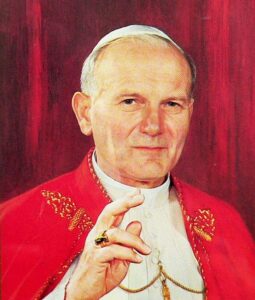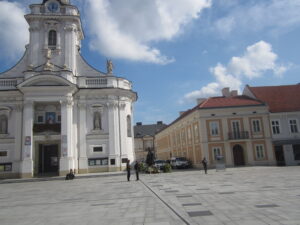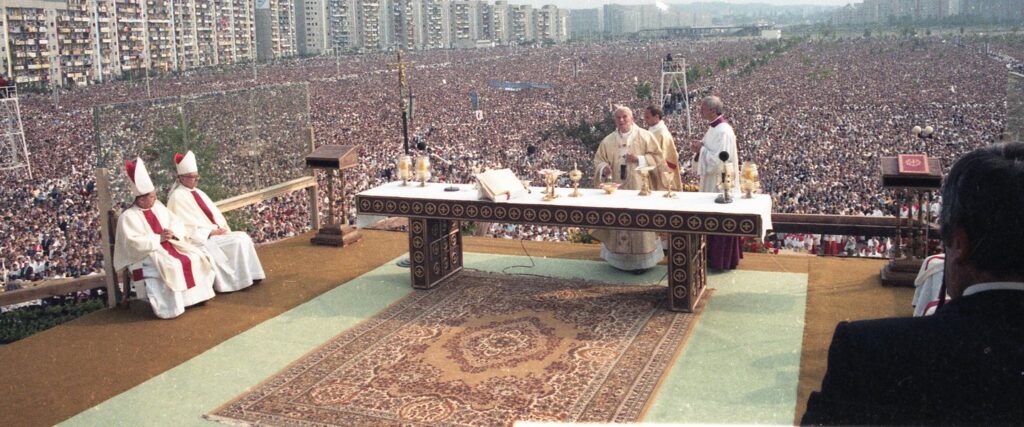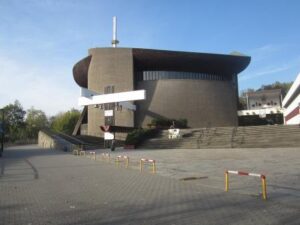 St. John Paul II of Poland was the most significant Pole in history. He passed away on April 2, 2005, after a twenty-six-year papacy, the third longest in history. His positive impact on the country of Poland is beyond measure. When he was elected pope in 1978, news broadcasters weren’t sure how to pronounce his given Polish name, Karol Józef Wojtyła. Who was this first pope from a Slavic country, and the first non-Italian pope in 455 years?
St. John Paul II of Poland was the most significant Pole in history. He passed away on April 2, 2005, after a twenty-six-year papacy, the third longest in history. His positive impact on the country of Poland is beyond measure. When he was elected pope in 1978, news broadcasters weren’t sure how to pronounce his given Polish name, Karol Józef Wojtyła. Who was this first pope from a Slavic country, and the first non-Italian pope in 455 years?
The path from Priest to Pope

Karol Wojtyła’s humble roots began in Wadowice, Poland, a city of 20,000 people. His family rented a two-room flat next door to the town church known today as Minor Basilica of the Presentation of the Blessed Virgin Mary. Many of his friends were Jewish, including his best friend. He experienced loss at a young age. His older sister died before he was born. His mother died when he was eight years old, and his older brother died when he was twelve years old. The local priest took him under his wing. The church was only steps away from his family’s apartment.

He developed an aptitude for academics, sports, languages, and theater and excelled in school. After exams, he often indulged in his favorite cream cakes. (Today they are known as Polish Papal Cream Cakes or Kremówka Papieska.)
In 1938, he and his father moved to Kraków, thirty miles northeast of Wadowice. There he enrolled in Jagiellonian University. When war broke out in 1939 and the Germans closed the schools, he continued his education in underground schools. To avoid deportation to a labor camp in Germany, he worked on a labor crew in a quarry. In 1941, his father died when he was twenty-one. A year later he began studying for the priesthood. In 1944, he barely escaped a Nazi roundup. He never forgot what it was to live through war and live under a foreign power determined to subjugate the Polish people and destroy Polish culture. Auschwitz was located only twenty miles north of his childhood home. There, both Jews and Polish Catholics died, including St. Maximilian Kolbe and St. Teresa Benedicta of the Cross.
His influence extended to billions of people worldwide
As the universal Pastor of the Church, he represented seventeen percent of the world’s population who identify as Catholic, or 1.6 billion people. From there the numbers are staggering. He met with heads of state and instituted World Youth Day. Until his health began to fail in later years, he traveled more than 680,000 miles to 129 countries as the ultimate missionary, diplomat, and emissary for peace. His appearances consistently drew large crowds, some of the largest in human history. No other Pope met as many people as Pope John Paul II.
Standing up to communism
 In 1978, Poland was under communist rule. Under communism, religion was discouraged in favor of atheism. To practice your faith was in itself a protest. In June 1979, Pope John Paul II visited Poland. In nine days he held Masses and gave more than 35 appearances and talks. There, he spoke to millions about the history of the nation, human rights, democracy, and the right of Poles to freedom. “You must be strong, dear brothers and sisters […] You must be strong with the strength of faith [ …] Today more than in any other age you need this strength.” In response, the crowd cried in unison “We want God!”
In 1978, Poland was under communist rule. Under communism, religion was discouraged in favor of atheism. To practice your faith was in itself a protest. In June 1979, Pope John Paul II visited Poland. In nine days he held Masses and gave more than 35 appearances and talks. There, he spoke to millions about the history of the nation, human rights, democracy, and the right of Poles to freedom. “You must be strong, dear brothers and sisters […] You must be strong with the strength of faith [ …] Today more than in any other age you need this strength.” In response, the crowd cried in unison “We want God!”
People worldwide began to pay attention to Poland. He was beyond the reach of communists to either unseat him or silence him. Now Poles had their voice against communism and an empowering message they had the right to be free. He knelt and prayed at Auschwitz. When he visited Wadowice for the first time as Pope, he remarked “It was here in this town, in Wadowice, that it all began. My life began, and school began, and my studies began, and theatre began, and the priesthood began.”
A year later, the Solidarity Movement began in the shipyards of Gdansk. In 1984, James A. Michener published Poland, his sweeping, well-researched novel, that mirrored the Polish spirit through the centuries. It ended in a direct challenge to communism, reflecting the real-life struggles in the 1980s. Without the presence and support of the Polish Pope, the Solidarity movement may never have happened.
The reform movement spread across the Eastern bloc until finally in 1989 the Berlin Wall fell.
Nowa Huta and Outdoor Mass

The town of Nowa Huta is but one story of how St. John Paul II peacefully protested communism. The communists built Nowa Huta as a “communist worker’s paradise” outside Kraków. The name means “The New Steel Mill”, for Lenin Steelworks built nearby. This communist ‘utopia’ was everything beautiful Kraków was not. The buildings were built in identical squat, square concrete blocks, which today are colored gray from the smog emitted by the nearby steelworks.
The communists preached atheism so there were no churches or Mass. That is until Karol Wojtyła, the newly named auxiliary bishop of Kraków began holding Mass in an open field in 1959. Poles would erect a cross; the communists took it down. A new cross would appear again.
Finally, after years of protest, the communists agreed to a church, as long as it didn’t look anything like a church. Fundraising began in the 1960s and construction began in 1969. In 1977, the Lord’s Ark church opened as a perfect and visible snub to communism: a Catholic church in the middle of a communist utopia. Instead of square corners, the edges were rounded. Instead of a traditional appearance, it looked modern, inside and out. Cardinal Karol Wojtyła consecrated it in 1977, one year before being elected Pope.
The contributions and accomplishments of this extraordinary man can and do fill volumes of texts, biographies, and museums. When he passed away nineteen years ago, on April 2, 2005, at age eighty-five, he left a formidable legacy, especially in Poland.

2 Comments. Leave new
Thank you for this short mention about such an important figure for Poles and Poland.
Of course. Thanks for reading. I was fortunate to visit Wadowice when I visited Poland in 2013. My tour guide even got me an audience with the school principal where he attended school. I also visited Nowa Huta, which I didn’t understand the significance until I was there.